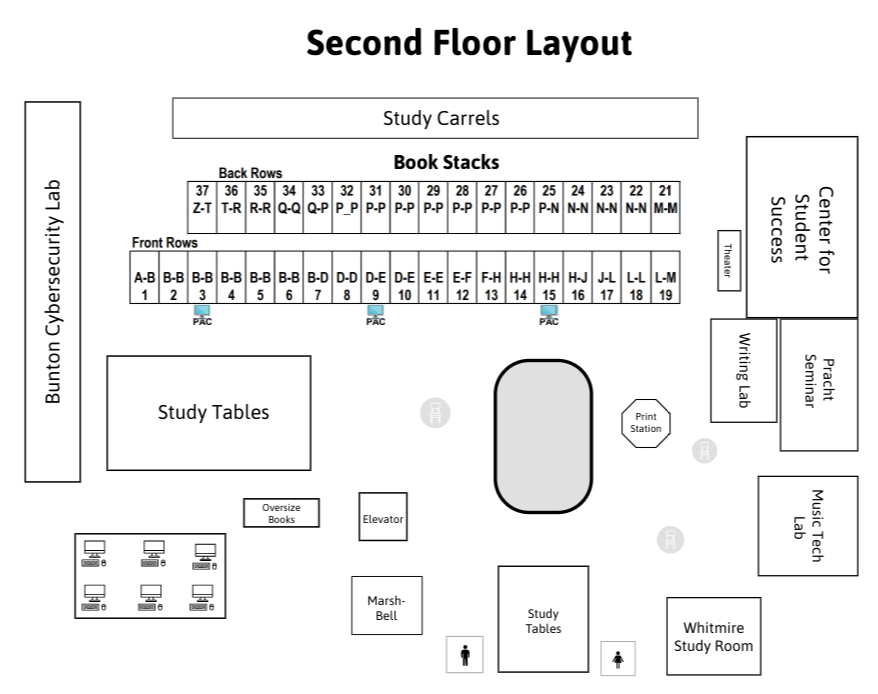To organize the physical resources on the shelves, Thrift Library uses The Library of Congress Classification (LCC) System which is used by many academic libraries to organize and categorize books and other materials. Developed in the early 20th century, it divides knowledge into 21 broad subject areas, each represented by a letter (e.g., "P" for Language and Literature, "Q" for Science). These main classes are further divided using a combination of letters and numbers to create a hierarchical and specific classification. Unlike the Dewey Decimal System, which is used primarily in public and school libraries, LCC is more complex and better suited for large research collections.
You find a book on the shelf by using the call number, shown in the catalog entry for the item. Here is an example of a book from Thrift's catalog:

The call number is listed on the last line: LA212 .R423 2005 and will be written vertically on the spine label of the book.
How to Read a Call Number
The LC system uses the beginning letters and first line of numbers to indicate the subject of the book. In this example, "L" signifies Education. "A" signifies the subject subdivision History of Education, and the "212" specifies the United States.
As you might expect, the letters are ordered alphabetically. For example, the letter D comes before K, and so forth. Similarly, the letter L comes before LA, which comes before LB.
The numbers immediately following the first letter(s) are read as whole numbers. For example, 212 comes before 761 but after 115. Sometimes there are decimals in the first number. In these cases, the whole numbers are read as before, but the numbers following the decimal are read as decimals. For example, LA 212.63 comes before LA 212.7
How do we read decimals? How are they different from whole numbers?
For example, 212.16 comes before 212.5 because .16 is a smaller decimal number than .50. Similarly, 212.257836 comes before 212.3 because .257836 is a smaller decimal number than .3000000.
Cutter Numbers
The next part of the call number (.R423 in our example) is referred to as the Cutter number, which is an expansion on subject classification. Cutter numbers contain letters, which are ordered alphabetically and decimal numbers. So, for example, .R423 comes after .B76 and .R227, but before .R966 and .T381.
Date of Publication
The last number in the above example, 2004, is the date of publication. This is to be shelved in chronological order for the same book. For example, a 2004 second edition comes after the original 1978 publication but before the 2006 third edition.


